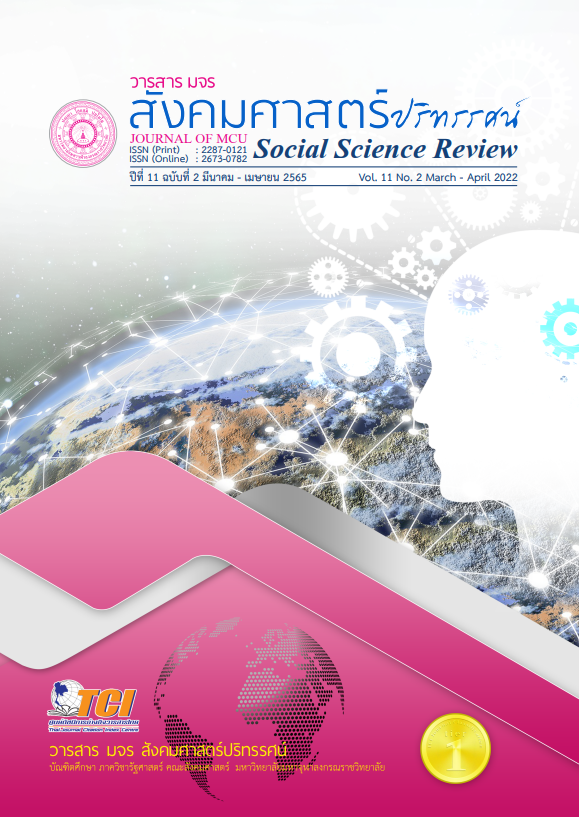EDUCATIONAL DEVELOPMENT GUIDELINES OF LOCAL ADMINISTRATIVE ORGANIZATIONS IN THE 21st CENTURY: A CASE STUDY OF EASTERN ECONOMIC CORRIDOR (CHACHOENGSAO, CHON BURI AND RAYONG)
Keywords:
Education Development, Local Government OrganizationAbstract
Objectives of this article were to study context and problem, analyze education system and propose a guideline for educational development, conducted by the qualitative method, collected data from document, in-depth interviewing 20 key-informants, and 7 participants in focus group discussion. The data were verified by using content and inductive analysis, arranged into a categorization, and tested by triangulation method.
The results showed that 1. Thai education was derived from a central planning, as a result, local administration did not have an opportunity to fully administer education suitable for local context and experience, no promotion towards community strength in term of public education management. The academic policy highlighted a search of educational excellence at a price of learners’ quality by an undistinguished assessment and educational quality indicators. The emphasis was placed only on exam score. Since the curriculum was articulated from the central, local wisdom and students’ capability were slowly diminished. The educational goal focused mainly on producing personnel to feed labor market in response to economic requirements. Therefore, it lacked diversity upon the learners, deprived learning pleasure. 2. Thai education system was gearing towards Thailand 4.0 in which there were creativity development in teaching and learning process in order to develop innovation 3. The proposal of educational development guidelines was based on 4 configurations or 4Ls where there were Learning to know, learning to do, learning to live together, and Learning to be.
References
พาสนา จุลรัตน์. (2561). การจัดการเรียนรู้สำหรับผู้เรียนในยุค Thailand 4.0. Veridian E-Journal, Silpakorn University. 11(2), 2363-2380.
วรากรณ์ สามโกเศศ. (2558). วิกฤติการศึกษาไทย การศึกษากับยาพิษแอบแฝง. บทบรรยายพิเศษ ณ มหาวิทยาลัยธุรกิจบัณฑิต กันยายน 2558. สืบค้น 15 พฤศจิกายน 2562. จาก http://www.birdkm.com/outside-classroom/outsideclass/thai-education-crisis.
วิลาสินี วัฒนมงคล. (2560). วิกฤตการศึกษาไทยในยุค 4.0. วารสาร “ศึกษาศาสตร์ มมร” คณะศึกษาศาสตร์ มหาวิทยาลัยมหามกุฏราชวิทยาลัย. 6(1), 61-62.
ชาญณรงค์ พรรุ่งโรจน์. (2557). 3 สาเหตุหลัก 'วิกฤติการศึกษาไทย'. การแลกเปลี่ยนความคิดเห็นกับสำนักงานคลังสมอง วปอ. เพื่อสังคมเกี่ยวกับการศึกษาไทย. สืบค้น 15 พฤศจิกายน 2562, จาก https://www.thairath.co.th/content/434275
ชัยวัฒน์ แก้วพันงาม และรับขวัญ ธรรมาภรณ์พิลาศ. (2556). นโยบายการศึกษาและการพัฒนาทรัพยากรมนุษย์ของไทยภายใต้เศรษฐกิจสร้างสรรค์. วารสารเศรษฐศาสตร์ปริทรรศน์ สถาบันพัฒนศาสตร์, 7(1), 251-306.
อานนท์ ศักดิ์วรวิชญ์. (2560). ความสุขของแรงงานไทยมาจากอะไร?: ผลกระทบของสถานะทางเศรษฐกิจและสังคม ความสมดุลของงานและชีวิต และสุขภาพจิตที่มีต่อระดับความสุข. วารสารพัฒนบริหารศาสตร์, 57(4), 47.
Hounsell, D. (1979). Learning to learn: Research and development in student learning. Higher Education, 8(6), 453–469.
Lee, et. al. (2013). Local education authorities and student learning: the effects of policies and practices. School Effectiveness and School Improvement. 23(2), 133–158.
Madani, R. A. (2019). Analysis of Educational Quality, a Goal of Education for All Policy. Higher Education Studies. 9(1), 100-101.
Downloads
Published
How to Cite
Issue
Section
License
Copyright (c) 2022 Journal of MCU Social Science Review

This work is licensed under a Creative Commons Attribution-NonCommercial-NoDerivatives 4.0 International License.
In order to conform the copyright law, all article authors must sign the consignment agreement to transfer the copyright to the Journal including the finally revised original articles. Besides, the article authors must declare that the articles will be printed in only the Journal of MCU Journal of Social Sciences. If there are pictures, tables or contents that were printed before, the article authors must receive permission from the authors in writing and show the evidence to the editor before the article is printed. If it does not conform to the set criteria, the editor will remove the article from the Journal without any exceptions.





